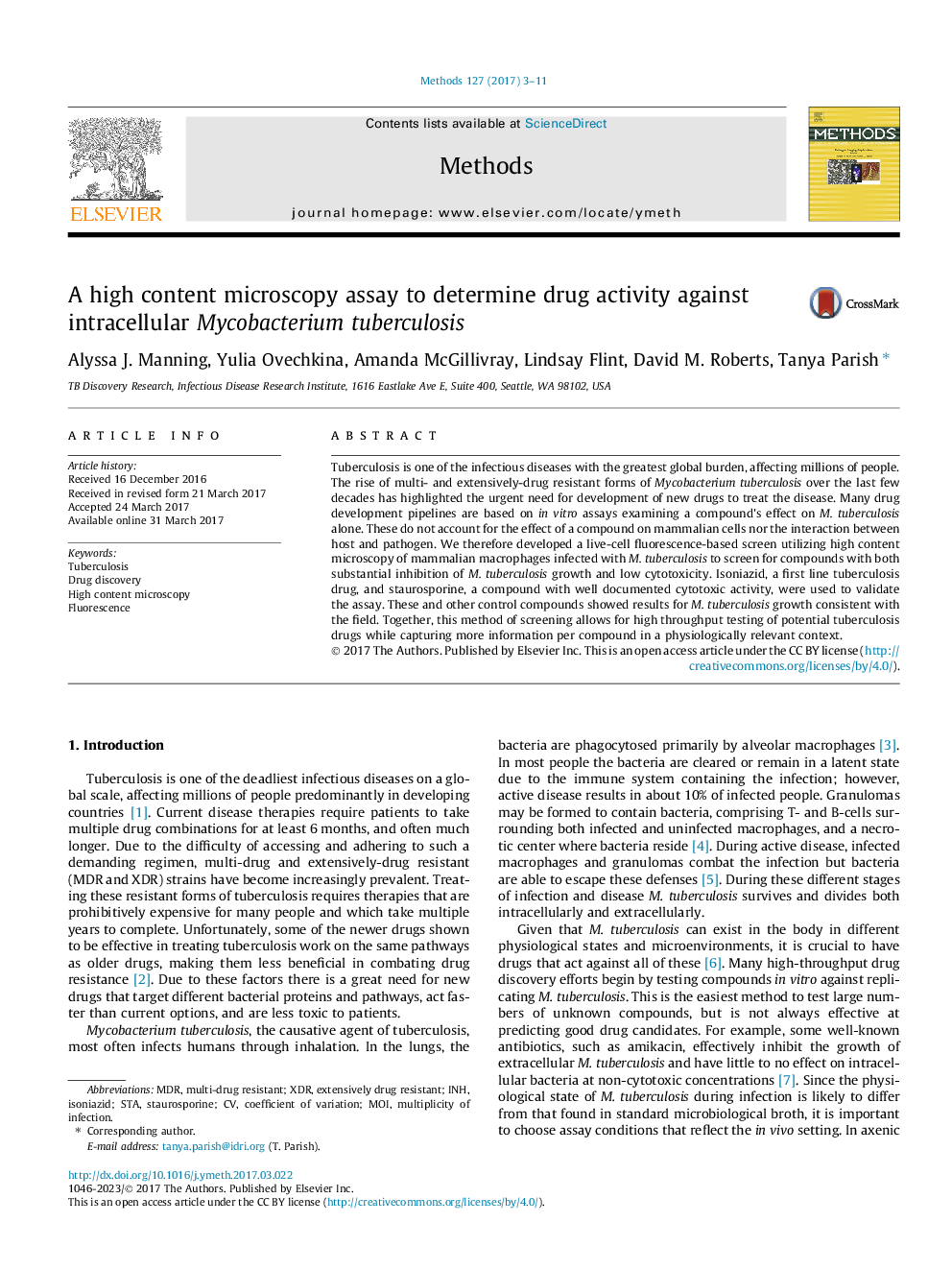| Article ID | Journal | Published Year | Pages | File Type |
|---|---|---|---|---|
| 5513367 | Methods | 2017 | 9 Pages |
â¢New drugs to treat tuberculosis and relevant high-throughput screens are needed.â¢Macrophages infected with Mtb were treated with compounds in 384-well plates.â¢High content fluorescent microscopy was used to image Mtb-infected macrophages.â¢Total pixel intensities were obtained for each cell type in each well.â¢This assay can be used to screen for antitubercular and non-cytotoxic compounds.
Tuberculosis is one of the infectious diseases with the greatest global burden, affecting millions of people. The rise of multi- and extensively-drug resistant forms of Mycobacterium tuberculosis over the last few decades has highlighted the urgent need for development of new drugs to treat the disease. Many drug development pipelines are based on in vitro assays examining a compound's effect on M. tuberculosis alone. These do not account for the effect of a compound on mammalian cells nor the interaction between host and pathogen. We therefore developed a live-cell fluorescence-based screen utilizing high content microscopy of mammalian macrophages infected with M. tuberculosis to screen for compounds with both substantial inhibition of M. tuberculosis growth and low cytotoxicity. Isoniazid, a first line tuberculosis drug, and staurosporine, a compound with well documented cytotoxic activity, were used to validate the assay. These and other control compounds showed results for M. tuberculosis growth consistent with the field. Together, this method of screening allows for high throughput testing of potential tuberculosis drugs while capturing more information per compound in a physiologically relevant context.
